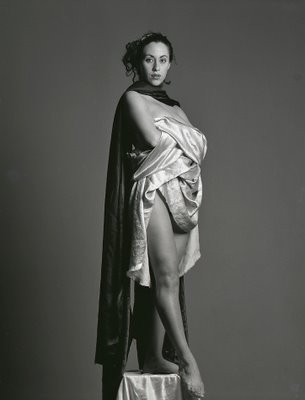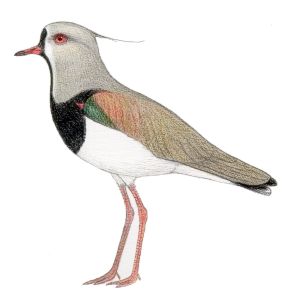That Elegant And Most Melancholy Vanellus cayanus
Tuesday, November 18, 2008
'And that's tero-teros,' Nicky said. A pair of black and white plovers got up and circled above us, shrieking that the enemy was about. 'And that's the ugliest damned noise. Hates man, that bird. Absolutely hates man.'
In Patagonia, Bruce Chatwin

A few things conspired yesterday to bring on a terrible nostalgic melancholy.
A couple of days ago I finished the terrific novel Mr. Darwin's Shooter by Australian author Roger McDonald. I would have never read this book had circumtances not played out the way they did. I read the review in the NY Times when it appeared in 1998 but somehow I never saw it at a bookstore and I forgot. Last week when I took the B-line bus to teach my class at Focal Point (the bus stops at Sasamat and 10th Avenue) I did my usual routine of looking into the window of the used books store that alongside the stop. I have spent a fair amount of change there. Bookstores should never be at bus stops. In the window was Mr. Darwin's Shooter as a pristine first edition that had (by appearences) never been read.
It is a novelized account of the life of Symns Covington who was Charles Darwin's assistant during the trip in the HMS Beagle (1831-1836). Even after that trip when Covington settled in Australia he sent Darwin a large collection of barnacles which were to be as crucial as finches in helping Darwin arrive at his theory.
I was particularly attracted to the scenes where Darwin and Covington travel through the Argentine pampa. There are beutiful passages on how Covington loaded his bird gun so that birds would not be damaged by bullets. The finches, shot in the Galapagos were the most crucial in helping Darwin arrive at his startling conclusion on where we came from. One passage on gauchos caught my eye and started my melancholia:
The country people, the gauchos whose paths he crossed - and who gave him their hospitality at night - expressed their pride in never walking at all. They used their feet only in hobbling to their saddle beds, hopping to their fires of dry thistles for roasting meats and brewing their yerba mattee [author's spelling] teas. They used legs for jumping from thistle-clumps, cutting throats of Indians or each other as it pleased them. Covington's safety was up to their whims. He sensed their dangerous humours but left such decisions to God, and laughed in their faces. They were like cripples or were bred to be centaurs, you might think, living on horseback in their fresh-cut cowhide boots crusted with blood, with silver spurs and spaces leaving the first two toes dirty and bare. Such toes were made for gripping stirrups not dirt.
Then last night Hilary mentioned that every day she walks by 21st Avenue and Laurel and notices that the house where my Argentine friends Nora Patrich and Juan Manuel Sanchez lived for many years has been changed and remodelled. Hilary said, "It is as if they never existed." I got up and put on Mi Buenos Aires Querido which is my very favourite (up there with any Piazzolla) Argentine tango music CD and it has Daniel Barenboim on piano, Rodolfo Mederos on bandoneón and Hécotor Console on bass. This CD is exquisite but extremely sad. After the music I opened up my copy of Darwin's The Voyage of the Beagle and spent some hours reading his entries on the Argentine and Uruguayan pampas. One of my favourite sections is when he writes of the birds of the pampas.
The teru-tero (Vanellus cayanus) is another bird, which often disturbs the stillness of the night. In appearance and habits it resembles in many respects our peewits; its wings, however, are armed with sharp spurs, like those on the legs of the common cock. As our peewit takes its name from the sound of its voice, so does the teru-tero. While riding over the grassy plains, on is constantly pursued by these birds which appear to hate mankind, and I am sure deserve to be hated for their never-ceasing, unvaried harsh screams. To the sportsman they are most annoying, by telling every other bird and animal of his approach: to the traveller in the country, they may possibly, as Molina says, do good, by warning him of the midnight robber. During the breeding season, they attempt, like our peewit, by feigning to be wounded, to draw away from their nests dogs and other enemies. The eggs of this bird ar esteemed a great delicacy.
On January 1953 I was 10 years old and my parents sent me to the camp (the English in Argentina call the campo or pampa the camp). One song was played to death that January and the only way to escape it was to hop on a horse and ride into the pampa where the only sounds where the rustling of the thistles and the tero-tero cries of Darwin's Vanellus cayanus which we Argentines adore and simply call the tero. That's the sound that it makes and when the bird flies low and swoops there is a sadness in its call whose memory of it brings in me a longing as powerful as that of the tango.
The song I was doing my best to avoid was the cloying:
How much is that doggie in the window?
The one with the waggly tail
How much is that doggie in the window?
I do hope that doggie's for sale
I must take a trip to California
And leave my poor sweetheart alone
If he has a dog, he won't be lonesome
And the doggie will have a good home
How much is that doggie in the window?
The one with the waggly tail
How much is that doggie in the window?
I do hope that doggie's for sale
I read in the papers there are robbers
With flashlights that shine in the dark
My love needs a doggie to protect him
And scare them away with one bark
How much is that doggie in the window?
The one with the waggly tail
Composed by Bob Merrill and sung by Patti Page.
During my horse travels I did not fall for the trick of a large tero with his espolones (I am sure that Darwin did not chose to reveal his knowledge in the above passage from the Voyage of the Beagle that only the male of the species has the sharp barbs on its wing shoulders). I found the nest and picked up one of the birds (it was small) and took him home with me to Buenos Aires. My tero grew and he romped in the front garden. We kept its wings clipped so it would not fly away. Anybody even approaching our front gate was alerted to us by my tero's "tero, tero". I had a guard bird! A year later, not long before we moved to Mexico my Uncle Tony brought us a very large brown poodle, Moro. It didn't take long before I found my terito with its wings broken. I was heart-broken and to this day I can vividly remember my tero's voice and how elegant and patrician he was.

Linda Lorenzo that beautiful Argentine woman who faced my camera and on whose body I layered all my memories of Argentine nostalgia is seen here as a tero with her elegant bolts of black, white and silver satin.






